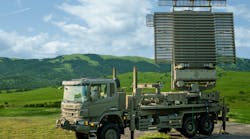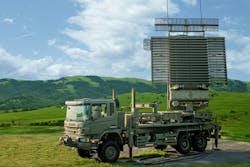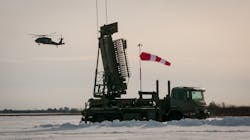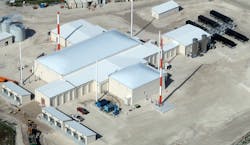1. Here, the TPS-77 MRR is mounted in a truck in the deployable mobility configuration. (Courtesy of Lockheed Martin)
The TPS-77 MRR, which operates from 1,215 to 1,400 MHz, can be configured for medium- or long-range. It’s mountable on vehicles and easily transportable via a C-130, truck, rail, or helicopter. Example missions for the TPS-77 MRR include unmanned-aerial-vehicle (UAV) detection, low-level flight surveillance, ground-based air defense, etc.
The radar system’s multi-role single-scan technology allows operators to select multiple missions for the radar at a single time, such as medium- or long-range low-level flight surveillance. It automatically adjusts to the selected mission as the radar rotates through each 360-degree scan. Changes can be made if the system is moved or if the mission is changed.
Lockheed Martin recently completed a successful site-acceptance test of its TPS-77 MRR (Fig. 2). The company made an on-time delivery of the first of three radars to the Ministry of Defense of the Republic of Latvia. Lockheed Martin noted that this was a “major step forward in strengthening Latvia's national defense.”




